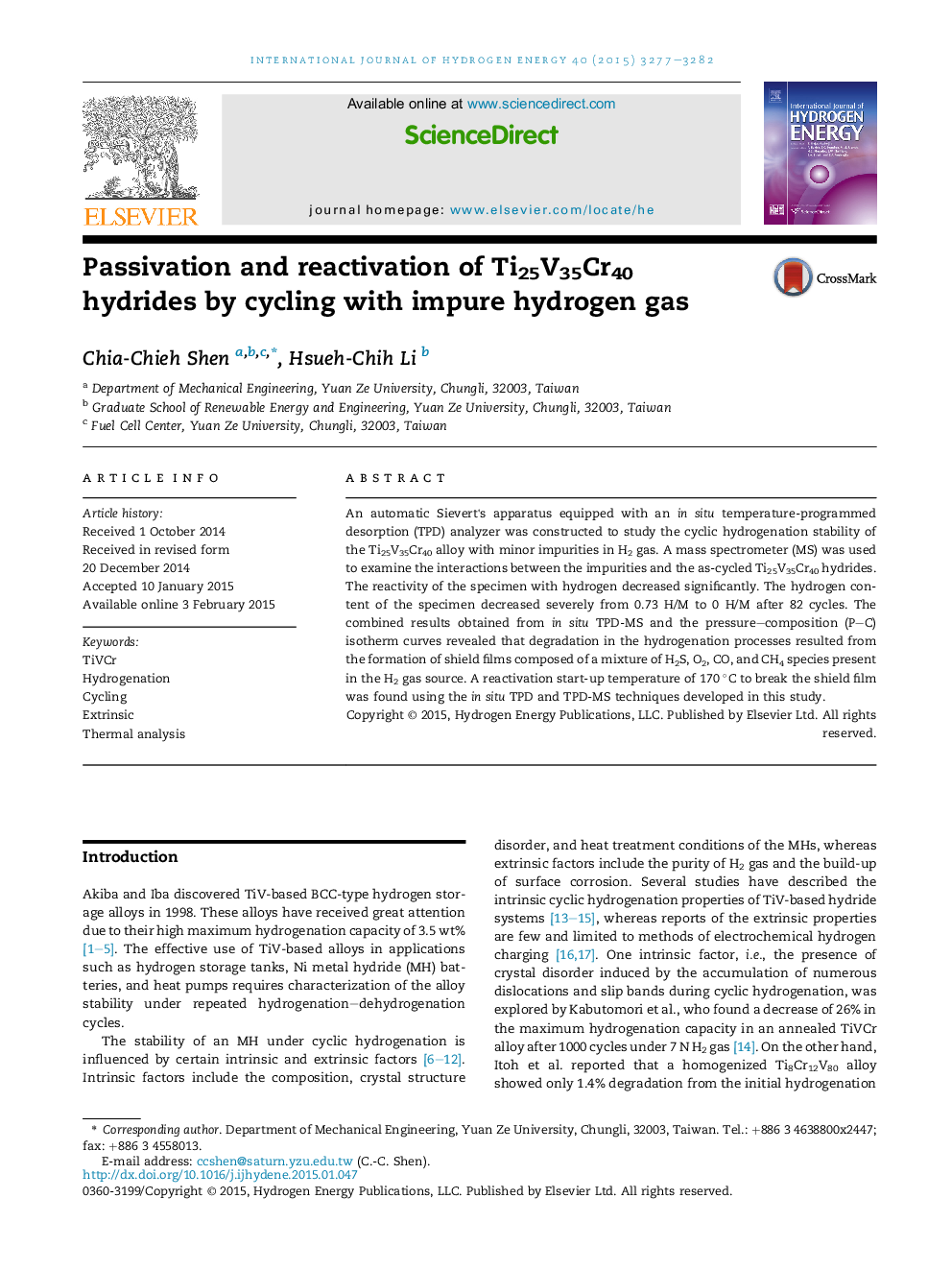| Article ID | Journal | Published Year | Pages | File Type |
|---|---|---|---|---|
| 1272023 | International Journal of Hydrogen Energy | 2015 | 6 Pages |
•Ti25V35Cr40 hydrides were passivated by the formation of a surface shield film.•The surface shield film comprised mixed impurities in a H2 gas source.•The reactivation temperature to restore the passivated hydrides was determined.
An automatic Sievert's apparatus equipped with an in situ temperature-programmed desorption (TPD) analyzer was constructed to study the cyclic hydrogenation stability of the Ti25V35Cr40 alloy with minor impurities in H2 gas. A mass spectrometer (MS) was used to examine the interactions between the impurities and the as-cycled Ti25V35Cr40 hydrides. The reactivity of the specimen with hydrogen decreased significantly. The hydrogen content of the specimen decreased severely from 0.73 H/M to 0 H/M after 82 cycles. The combined results obtained from in situ TPD-MS and the pressure–composition (P–C) isotherm curves revealed that degradation in the hydrogenation processes resulted from the formation of shield films composed of a mixture of H2S, O2, CO, and CH4 species present in the H2 gas source. A reactivation start-up temperature of 170 °C to break the shield film was found using the in situ TPD and TPD-MS techniques developed in this study.
Graphical abstractFigure optionsDownload full-size imageDownload as PowerPoint slide
